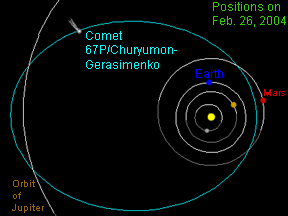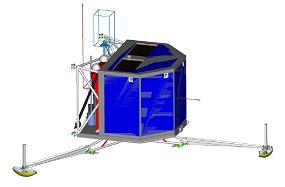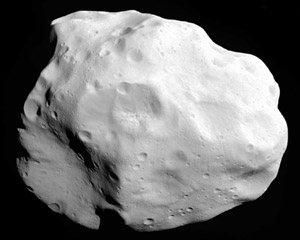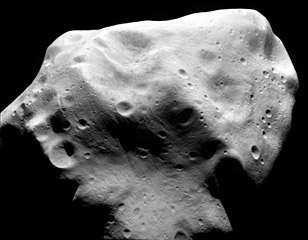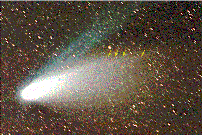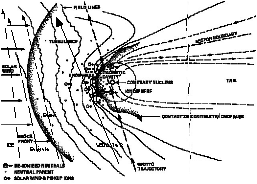Click on image for full size
Courtesy of ESA
Rosetta Lander
Part of the Rosetta spacecraft is a lander that will touch down on the surface of the comet. Since the comet is much smaller than a planet or even a moon, the gravity on its surface is very weak. The engineers who designed the Rosetta lander had to make sure it doesn't bounce (and maybe tip over!) when it lands. The lander will be moving very slowly, between 0.7 and 1.5 meters per second (1.5 to 3.4 miles/hour), when it touches down. It will shoot harpoons into the icy surface of the comet when it lands. Cables from the harpoons will anchor the lander to the surface.
The Rosetta lander was originally supposed to land on a small comet named Comet Wirtanen. When the launch of the Rosetta mission had to be delayed, scientists were forced to choose a new target for the mission. Rosetta is now scheduled to land on Comet Churyumov-Gerasimenko in November 2014. The nucleus of Comet Churyumov-Gerasimenko is about four times larger than the nucleus of Comet Wirtanen, so the gravity of Rosetta's new target is about 30 times stronger than the gravity of its original target. This means the lander will be coming down faster when it makes its landing, so mission engineers had to make some changes to the lander to keep it from hitting too hard and possibly tipping over. They added a "tilt limiter" to the landing gear of the spacecraft that keeps the lander's legs from flexing too much on landing. This change should ensure a safe landing for the Rosetta lander.
The lander will carry various instruments that it will use to study the comet. Instruments called spectrophotometers will analyze the surface, reporting the types of chemicals found there. The lander also has small drills that will dig into the comet to retrieve core samples. These samples will help us determine the subsurface composition of the comet. The lander also has cameras that will take pictures of the surface in both visible and infrared wavelengths.








